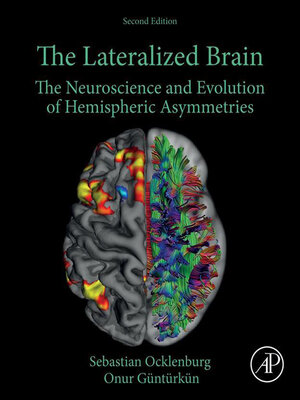The Lateralized Brain
ebook ∣ The Neuroscience and Evolution of Hemispheric Asymmetries
By Sebastian Ocklenburg

Sign up to save your library
With an OverDrive account, you can save your favorite libraries for at-a-glance information about availability. Find out more about OverDrive accounts.
Find this title in Libby, the library reading app by OverDrive.



Search for a digital library with this title
Title found at these libraries:
| Library Name | Distance |
|---|---|
| Loading... |
The second edition of The Lateralized Brain provides for readers a volume detailing the functional and structural differences between the left and right hemispheres of the brain, highlighting how the widespread use of modern neuroimaging techniques such as fMRI and DTI have completely changed the way hemispheric asymmetries are currently investigated.
In this new edition, all chapters have been updated with recent advances in the field, and a new chapter on hemispheric asymmetries in development and aging has been integrated. Also featured is a new, larger section on laterality in social behavior, alongside a comprehensive overview about key topics in laterality research, including its history, evolutionary perspectives, brain structure, and the role of the corpus callosum. Chapters cover functional hemispheric asymmetries in language processing, motor behavior, spatial attention, self- and face-perception, emotion processing, and social behavior. Additional topics include the ontogenesis of hemispheric asymmetries and their development over the life span, as well as sex differences and associations with clinical syndromes. This volume can be used by anyone working on hemispheric biology or in courses on hemispheric asymmetries. - Provides a comprehensive overview about key topics in laterality research, including its history, evolutionary perspectives, the corpus callosum, and brain structure
- Includes references to key articles, books, protocols, and online resources for additional, detailed study
- Discusses classic studies that helped define the field of laterality research and presents introductory short stories (e.g. famous classic clinical cases in laterality research) as a starting point for each chapter
- Covers key concepts and methods in separate call-out boxes for quick overview
- Newly integrates a chapter on laterality in social behavior, as well as various smaller new sections covering recent advances in the field







